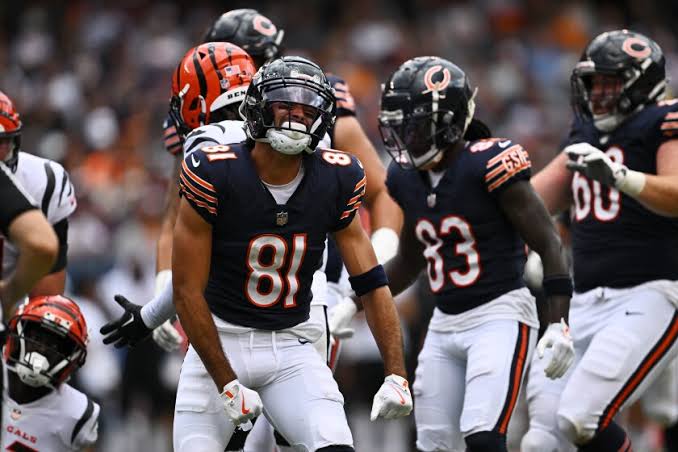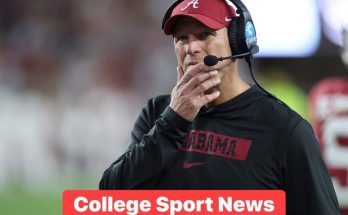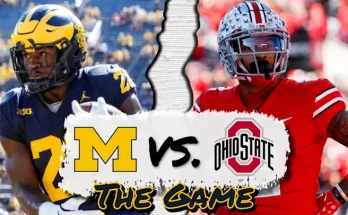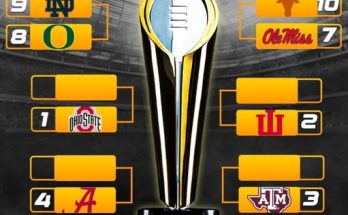The NFL Landscape Will Be Altered by the Bears’ Proposed Mega-Trade: The Jets’ Superstar Was Sent Packing by the Bears’ Underperforming Playmaker
In a move that has sent shockwaves throughout the NFL, the Chicago Bears and New York Jets have reportedly finalized a blockbuster trade that reshapes the competitive landscape of the league. The trade, which swaps the Jets’ superstar wide receiver Garrett Wilson for the Bears’ enigmatic but underperforming playmaker, Chase Claypool, includes draft picks and conditional clauses that reflect the high stakes of this exchange. This unprecedented deal is more than just a swap of talent; it’s a seismic shift with implications that extend far beyond these two franchises.
Setting the Stage for the Trade
The Bears, despite high hopes for the season, have struggled to find their footing, particularly in the passing game. Justin Fields, their talented yet embattled quarterback, has been mired in inconsistency, partly due to the lack of a dependable receiving corps. Chase Claypool, whom the Bears acquired in a midseason trade from the Pittsburgh Steelers in 2022, was expected to emerge as a reliable target. Instead, his tenure in Chicago has been marred by inconsistent production, lapses in focus, and questions about his fit within the offensive system.
On the other side, the New York Jets entered the 2024 season with sky-high expectations, buoyed by the acquisition of Aaron Rodgers to lead their offense. Garrett Wilson, the reigning Offensive Rookie of the Year, was expected to be the centerpiece of this revitalized offense. However, Rodgers’ early-season injury left the Jets scrambling, and despite Wilson’s elite talent, the offense struggled to capitalize on his abilities. Discontent reportedly brewed within the organization, culminating in the decision to part ways with their young star.
The Mechanics of the Deal
The trade package includes Chase Claypool heading to New York, along with a second-round pick and a conditional third-round pick in the 2025 NFL Draft. In return, the Bears acquire Garrett Wilson and a fifth-round pick. The conditional pick is tied to Wilson’s performance metrics and the Bears’ playoff success over the next two seasons. This trade is a gamble for both sides but offers clear potential upside.
For the Bears, the appeal of Garrett Wilson is undeniable. At just 23 years old, Wilson has already established himself as one of the most electrifying playmakers in the league. His crisp route running, explosive speed, and ability to make contested catches instantly elevate Chicago’s receiving corps. He’s a game-changer for an offense desperate for consistency and big-play ability. By pairing Wilson with Fields, the Bears aim to unlock their quarterback’s potential and reignite their playoff aspirations.
From the Jets’ perspective, the move is more complex. While Garrett Wilson’s departure is undoubtedly a loss, the team’s decision to acquire Chase Claypool suggests a focus on a fresh start and perhaps a belief in Claypool’s untapped potential. At 6’4” and 238 pounds, Claypool possesses a rare combination of size and athleticism, traits that made him a breakout star during his rookie season in Pittsburgh. The Jets may view him as a reclamation project who could thrive in a new environment, especially under the guidance of Rodgers (if he returns healthy) or in a revamped offensive scheme.
Implications for the Bears
The arrival of Garrett Wilson represents a significant shift in strategy for Chicago. After years of misfires in building a competent receiving unit, the Bears finally have a true number-one receiver who can change games single-handedly. His presence on the field will force defenses to adjust, opening up opportunities for other playmakers such as Darnell Mooney and tight end Cole Kmet. Additionally, Wilson’s ability to stretch the field aligns perfectly with Fields’ deep-ball accuracy, a facet of his game that’s been underutilized due to lackluster receiver play.
However, the trade also places immense pressure on Fields and head coach Matt Eberflus. With an elite weapon at their disposal, excuses for offensive inefficiency will no longer hold water. Fields’ development—or lack thereof—will now be under an even brighter spotlight. The Bears’ front office is betting that this move will catalyze a turnaround, but failure to capitalize on Wilson’s talent could spell the end of this regime.
Implications for the Jets
For the Jets, the trade signals a recalibration rather than a rebuild. Claypool’s acquisition comes with questions, but it also offers hope. If he can rediscover the form that made him a Pro Bowl-caliber player early in his career, he could become a valuable red-zone threat and a mismatch nightmare for opposing defenses. The draft picks they secured in the deal give the Jets flexibility to address other areas of need, such as offensive line depth or quarterback succession planning.
Nevertheless, this trade also carries risks for New York. If Claypool fails to deliver, the Jets will face criticism for squandering an elite talent in Wilson. Moreover, the move could have a ripple effect on team morale, particularly among players and fans who viewed Wilson as a cornerstone of the franchise’s future.
League-Wide Ramifications
Beyond the immediate impact on the Bears and Jets, this trade has broader implications for the NFL. For one, it underscores the increasing fluidity of player movement in a league that has historically been more conservative compared to the NBA or MLB. Franchise-altering trades like this one—particularly involving young stars still on rookie contracts—were once rare but are becoming more commonplace as teams adopt more aggressive roster-building strategies.
Additionally, the trade highlights the growing importance of wide receivers in today’s NFL. With the league increasingly tilted toward high-powered passing offenses, elite receivers are now viewed as indispensable assets. The willingness of both teams to take significant risks reflects the premium placed on this position.
The deal also reignites debates about the value of draft picks versus proven talent. While draft capital provides long-term flexibility, it comes with inherent uncertainty. By acquiring Wilson, the Bears have chosen a known commodity over the potential of unproven prospects. Conversely, the Jets are betting on their ability to maximize the value of the picks they’ve acquired, even at the cost of parting with an established star.
What Comes Next?
For the Bears, the focus now shifts to integrating Wilson into their offensive system. Building chemistry with Fields will be paramount, and early signs of progress could define the trajectory of their season. The Bears’ schedule includes several marquee matchups that will test their revamped offense and offer a litmus test for the success of this trade.
The Jets, meanwhile, must navigate the challenge of reintegrating Claypool into a new environment while managing expectations. The success of this trade will hinge on whether Claypool can adapt quickly and deliver on his physical promise. The team’s ability to use their newfound draft capital wisely will also be critical in determining whether this move is viewed as a win in hindsight.



